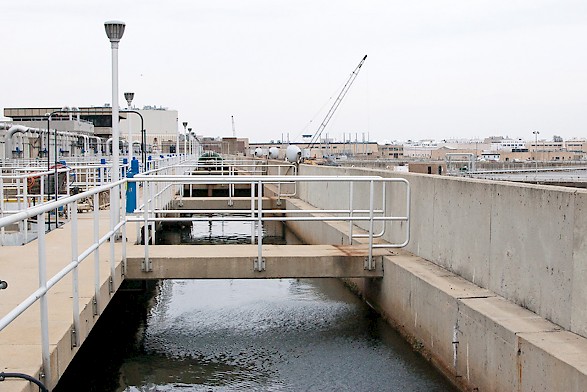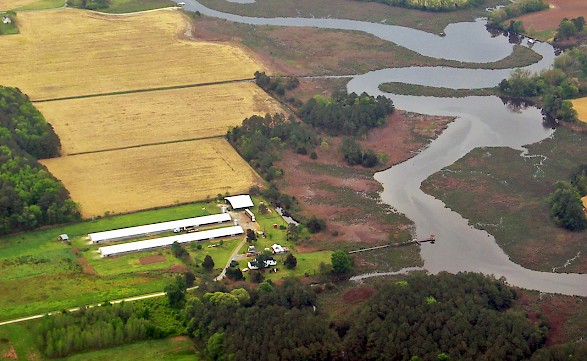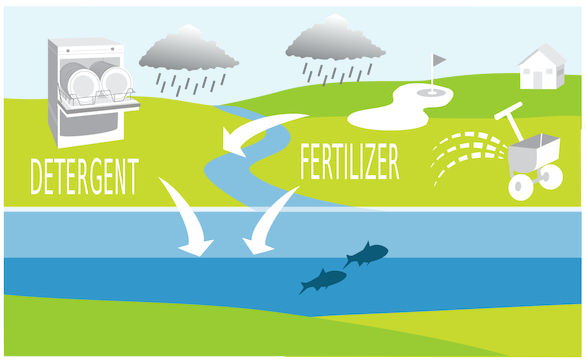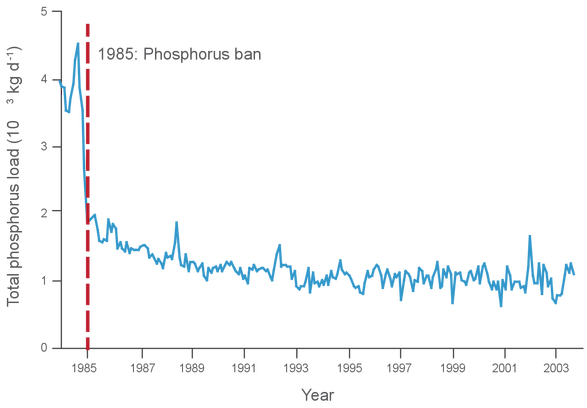Improving water quality in wastewater treatment plants
Following implementation of the Clean Water Act and the National Pollutant Discharge Elimination System permits, upgrades to wastewater treatment plants have led to many instances of improved water quality. Greater investment in improved water treatment technology will lead to further water quality improvements and help offset the additional pressures of a growing urban and suburban population.
Wastewater treatment plant upgrades in the Potomac River and Patuxent River watersheds resulted in reductions in phosphorus and nitrogen concentrations, which led to recovery of aquatic seagrasses in some tidal areas.

Reducing agricultural runoff
Agriculture is the source of 42% of the nitrogen and 46% of the phosphorus found in the Chesapeake Bay. Reducing agricultural nonpoint nutrient sources has presented a challenge due to the complex nature of diverse agricultural practices throughout a watershed characterized by varied landscapes and geology.
Despite this difficulty, a number of best management practices (BMPs) have been proven effective in reducing nutrient loads from agricultural lands and improving local water quality. These practices include appropriate manure and fertilizer management, planting winter cover crops, and controlling livestock access to streams.

Reducing phosphorus loads into the Bay
Though found in nature, too much phosphorus acts like fertilizer and spurs the growth of algae. When the algae die, their decomposition depletes oxygen needed by the fish, crabs, and other marine life of the Chesapeake Bay.

In 1985, it was estimated that 9% to 34% of phosphorus going into sewage treatment plants came from residential dishwashing detergent, and as a result, Maryland and DC joined several other states by banning or substantially reducing phosphate from detergent products. Since then, phosphorus loads from wastewater treatment plants have declined by 72%.

Lawns, parks, golf courses and other grass-covered areas cover 3.8 million acres of the Chesapeake Bay watershed. Most established lawns do not need phosphorus, but the majority of commonly used lawn fertilizers include phosphorus in their nutrient mix.
Passed in 2011, Maryland’s lawn fertilizer law limits the amount of nutrients that can be applied to lawns or turf, and restricts phosphorus content in lawn fertilizer.
The goal is to help homeowners and lawn care professionals maintain healthy lawns without applying excess amounts of nitrogen and phosphorus that may end up polluting the Bay.
